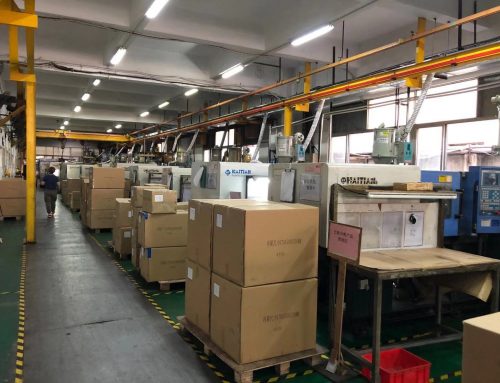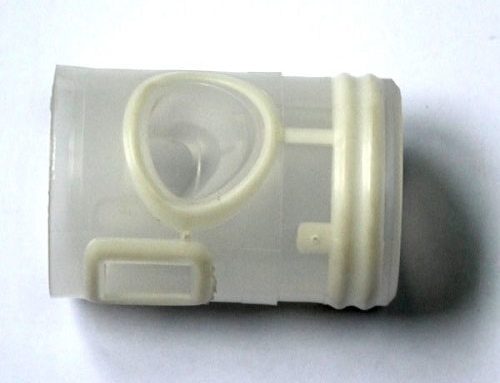Mold temperature is the most important variable in plastic molding – no matter what kind of injection moulding products is molded, it must be guaranteed to form a basic wetting of mold surface. A hot mold surface keeps plastic surface liquid for a long time, enough to create pressure in cavity. If cavity fills up and cavity pressure presses soft plastic against metal before frozen skin hardens, replication of cavity surface is high. On the other hand, if plastic that entering cavity at low pressure is suspended, its’ slight contact with metal will cause stains no matter how short the time is, sometimes referred to as gate stains.
For each mold parts, there is a limit to surface temperature of plastic molding. If exceed this limit, one or more adverse effects may occur (for example, component may overflow burrs). Higher mold temperatures mean less flow resistance. On many plastic molding machines, this naturally means faster flow through gates and cavities because injection flow control valve used does not correct this change, and filling will cause higher effective pressure in runners and cavities. May cause flash burrs. Since hotter model does not freeze plastic that enters edge of flash before high pressure is formed, melt can flash over ejector rod and spill into gap of dividing line. This suggests that there is a need for good injection rate control, and some modern flow control programmers can do this.
In general, an increase in temperature of mold reduces condensation of plastic in cavity, making molten material flow more easily in the cavity, resulting in greater part weight and better surface quality. At the same time, increase in mold temperature also increases tensile strength of part.
First, mold heating method
Steel heating is a heating method that must be used in almost all plastic molding design. It can be designed in one-way wiring, two-way wiring, etc. Material can be used with seamed pipe, seamless pipe, stainless steel pipe, etc. It is characterized by small heat loss, high thermal efficiency, simple cable. And it can be designed as 220V or 380V according to needs, wiring is flexible and diverse. However, due to limitations of its materials and injection moulding process technology, it is necessary to pay attention to its characteristics in injection mold design.
Iron core is usually also used as a kind of mold heating tube. It is characterized by high power per unit length (usually 10mm in diameter, 8cm in length of iron core can reach 150W output power), durable, safe and difficult to form a breakdown short circuit. It can be buried by drilling blind holes. Disadvantage is that it is difficult to customize injection mold design, and fragile and broken when it is replaced.
Second, mold insulation method
Strengthening insulation measures of plastic molding can reduce heat loss of mold, and mold can reach predetermined production temperature in a short time and reduce energy waste.
There are many insulation measures for mold, and aluminum hydroxide insulation cotton can be wrapped with asbestos cloth or glass cloth for heat preservation. There is also a thermal insulation coating on the market which is currently used as an ideal material for mold insulation. It is made of medium-long fiber, slurry and a kind of thermal insulation foam. It has moderate viscosity and is easy to apply. This material is often used as a thermal insulation material for chemical and heating pipes, and is slightly alkaline (corrosive mold). No negative effects such as charring, melting, and odor were observed after use at 150 °C. At the same time, material is light and plastic, and it is easy to form a more beautiful mold surface.
Many plastic molding, especially engineering thermoplastics, operate at relatively high temperatures, such as 80 degrees Celsius or 176 degrees Fahrenheit. If mold is not insulated, heat lost to air and injection molding machine can easily be lost as much as shot cylinder.
Therefore, mold-frame is insulated, and if possible, surface of mold is insulated. If a hot runner mold is considered, try to reduce heat exchange between hot runner portion and cooled injection mold parts. Such an approach can reduce energy loss and warm-up time.
Third, mold cooling method
Water cooling is cooling method adopted by most molds, but it also has its shortcomings; it requires pipeline to be well sealed, water supply and drainage pipelines must be unobstructed, and waste of water resources is large. When cooling temperature exceeds 100 ° C, steam explosion is likely to occur. Advantage is that heat capacity is large, and temperature can be quickly cooled.
Wind cooling is an ideal cooling method. Contrary to water cooling, it does not require strict pipe sealing. There is no waste of resources. It can cool mold with temperature higher than 100 °C. Flow rate of gas can be used to determine cooling rate. And source is simple and convenient, and a certain scale of production plastic molding company can obtain a more convenient gas source.




